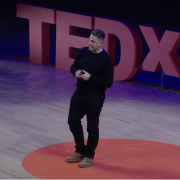I’ve been working through the ILM Level 7 Executive Coaching Qualification.
One of the tasks involved in gaining the qualification is to complete a written project answering a series of questions using personal experiences and knowledge of coaching at an executive level.
The first question is: Critically compare the strategic purposes of coaching and mentoring at an executive or senior level.
A lot of people make the same mistake by thinking that coaching and mentoring are the same thing. They are not. It’s common for people to confuse executive coaching styles and techniques with those of sports and/or fitness coaching. A sports coach will give instruction to a performer; a tennis coach will often tell a player to do a certain movement or how to react to a specific situation.
Executive coaching is about building relationships, communication and discovery rather than being taught or told. Sir John Whitmore describes coaching in his book Coaching for Performance as “Unlocking people’s potential to maximise their own performance”. And believes that coaching is less about instruction and more about guided discovery.
Mentoring on the other hand is when someone advises, guides and/or teaches someone. This is done through the mentor passing on advice through their own experiences and knowledge to a protege or the ‘mentee’.
It’s easy to think that in order to be a successful executive coach, the person coaching should have the relevant experience and knowledge of the job and tasks involved. This is actually not necessarily true; if an executive coach has knowledge and experience in the area that they are coaching in, then there is the danger of the coach imparting their knowledge and telling the person/people they are coaching what to do. This could potentially block the discovery process and move into the teacher/trainer/mentor role. Whitmore backs this theory up; “..mentoring is very different to coaching, because coaching is not dependent on a more experienced person passing down their knowledge – in fact, this undermines the building of self-belief which creates sustained performance..”
Coaching is more about facilitating the process for the individual or the group. The famous former American Football coach who became known as The Trillion Dollar Coach and worked with Apple and Google Execs would often say “Coach the team, not the problem”. Even if he had the answers for what he thought was the best way to solve the problem, he would rather use coaching techniques with his team of execs to guide them to the solution.
This doesn’t mean there is no requirement for mentoring. Far from it. If there is someone in any organisation with a wealth of experience and knowledge, then they should be used in a way to pass it on to people who might be in need of it. A mentor is hugely valuable in leadership roles. This is vital in the learning and development process for any organisation. It can’t be expected that a less experienced executive is left alone to gain experience and understanding with no guidance from someone who can help by imparting their own knowledge.
So is there a place for coaching and mentoring in the workplace?
Carol Wilson explains it perfectly in her book Performance Coaching; “An effective leader is able to move smoothly between directive and non-directive management, serving his or her subordinates sometimes as a coach and sometimes as a mentor, and where necessary giving orders.”
A leader needs to be able to switch between coach and mentor continuously. Understanding when a learning moment requires the non-directive guidance to allow the individual or team the space to discover the answers on their own. And when their own knowledge and experience will be valuable to pass down. A good leader develops people to their best potential and doesn’t hold people back. Once a mentor has passed on all of their wisdom, they can become an anchor and end up holding individuals and teams back. When a leader uses a mixture of coaching and mentoring, they give the individuals and groups the chance to gain even more knowledge which grows the individual or groups potential.
“Good coaching and leading, and good mentoring for that matter, can and should take the coachee beyond the limitations of the coach, leader, or mentor’s own knowledge.” – Sir John Whitmore Coaching for Performance
The main differences are that coaching is all about non-directive communication and guided discovery. Getting the ‘coachee’ to solve their own problems through creating self-belief and not depending on being given the answers. It can be personal and doesn’t necessarily require an expert in the subject area to be a coach. In fact, the opposite could be better.
Mentoring is someone with more knowledge and experience passing on their wisdom and directing the ‘mentee’ on what they think they should do to improve their performance. This is very helpful for learning development and can be tailored for the individual by using a mentor with the specific expertise. However, this can cause a dependency from the individual to the mentor. And once the mentor has passed on all of their knowledge and wisdom, this could hold the mentee back.
Learning to use non-directive coaching techniques can help individuals, teams and organisations grow. The more coaching skills that a leader can gain and use, the better chance they have of creating a successful environment where everyone can maximise their performance.



